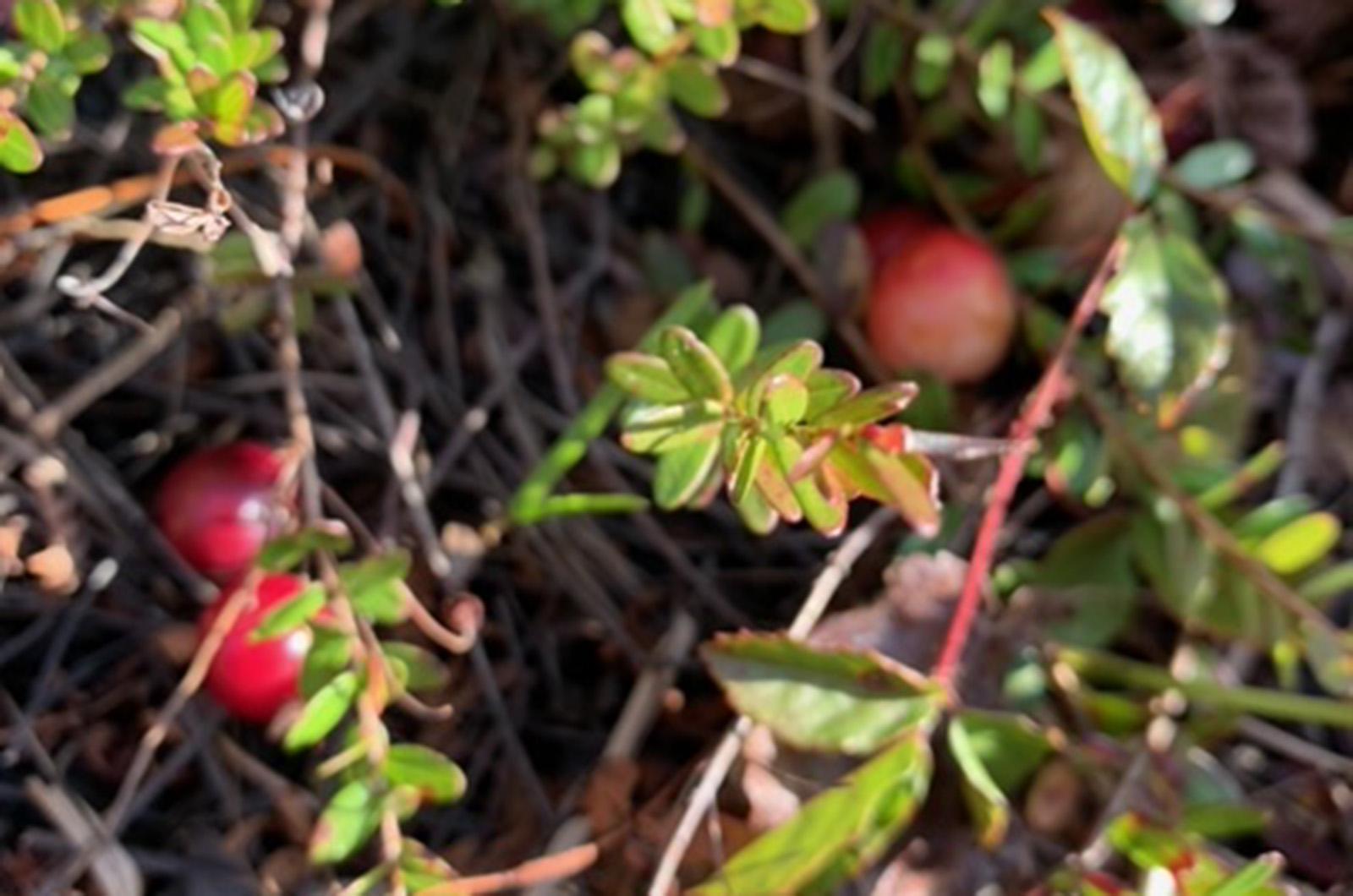Nancy Weaver’s red-stained knees were the giveaway that she was in the know.
It also indicated that she had bags of berries in her refrigerator and perhaps some also socked away in the freezer. Not only is she in the know, she had also been in the bog, the cranberry bog. The ruby pigment smeared on her pants was a harvesting badge of honor and I would soon have my own stained pants and freezer full of cranberries.
Thank Vineyard Open Land Foundation (VOLF) for its insight, commitment and perseverance to restore and operate a traditional and organic cranberry bog.
What Nancy, myself and many others know is that Cranberry Acres — VOLF’s Lambert’s Cove Road bog — is open to the public for cranberry harvesting. What a treat it was to be out on a warm November day on my hands and knees, face down in the dirt and picking crimson jewels for my holiday table and winter fruit needs.
Cranberry Acres and super-host Annette Anthony welcome people 10 a.m. to 4 p.m. every day except Wednesday and Sunday to get down and dirty and pick some cranberries. The cost is $10 per person and there is no limit to what you can harvest.
Cranberry bogs are a natural feature of our landscape. After the glaciers scoured the land, cavities were carved out and formed kettle holes. These eventually filled with sand and debris, creating the ideal habitat for cranberry vines to take hold. Natural bogs were harvested by Indigenous people before commercial operations were started on the Cape in 1816.
Of course, the Wampanoag traditionally harvested Island bogs and continue to do so. Many historic bogs were found across the Vineyard with notable family names including Dutton, Kidder, Flynn, Bodfish, Howland, Goethals and others who tried their hand at harvesting and selling cranberries. Bog operations became more popular after the whaling industry died. They continued through the mid-1900s, though many of these bogs were damaged by the 1938 hurricane.
At the Cranberry Acres site, the bogs were active from the late 1880s through the 1970s. Manny Duarte was the last cranberry farmer at the site. He purchased the property in 1940, when a barrel of cranberries — around 100 pounds — could be sold for $32. Demand decreased after World War II and prices that farmers could get plummeted to $5 per barrel in 1965. The Duarte family turned the land into a campground when cranberries failed to provide a living.
Vineyard Open Land Foundation purchased the property in 1983 and spent considerable time, money, and effort to create and manage the bog we see today. It serves as a demonstration site for an environmentally-friendly, economically-viable, organic cranberry bog. Though many think of cranberry bogs as wetlands, no waders are needed to harvest these glorious globs of fruit. This bog is dry, though the year-round process requires flooding two times per year: once in the winter to maintain the temperature and another in the spring for insect control.
The harvest and processing of cranberries is fascinating. The barn on site was built in the 1800s and has been beautifully restored. The antique equipment inside is used to winnow and sort the cranberries, though human hands do the final quality control separating the berries into premium and seconds for sale at farms and stores Islandwide and used by restaurants for their fall specialties.
There is so much more to say and see about the cranberry operation at the Lambert’s Cove site, but the best thing to do is experience it for yourself. Take my advice and go make harvesting memories — but be sure to wear pants that you don’t mind staining red with bits of mashed and juicy cranberries.
Suzan Bellincampi is Islands director for Felix Neck Wildlife Sanctuary in Edgartown and the Nantucket Wildlife Sanctuaries. She is also the author of Martha’s Vineyard: A Field Guide to Island Nature and The Nature of Martha’s Vineyard.







Comments (1)
Comments
Comment policy »